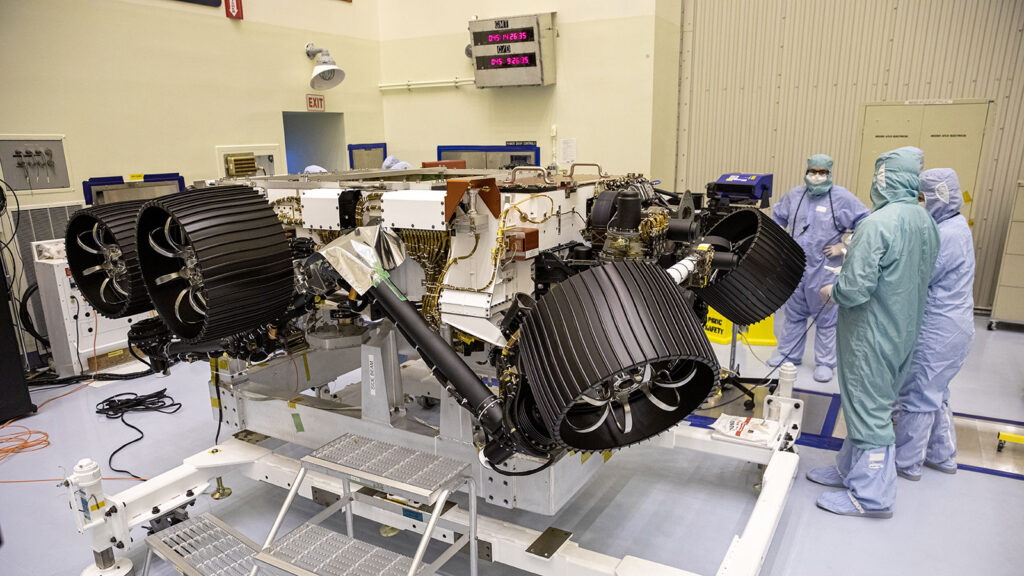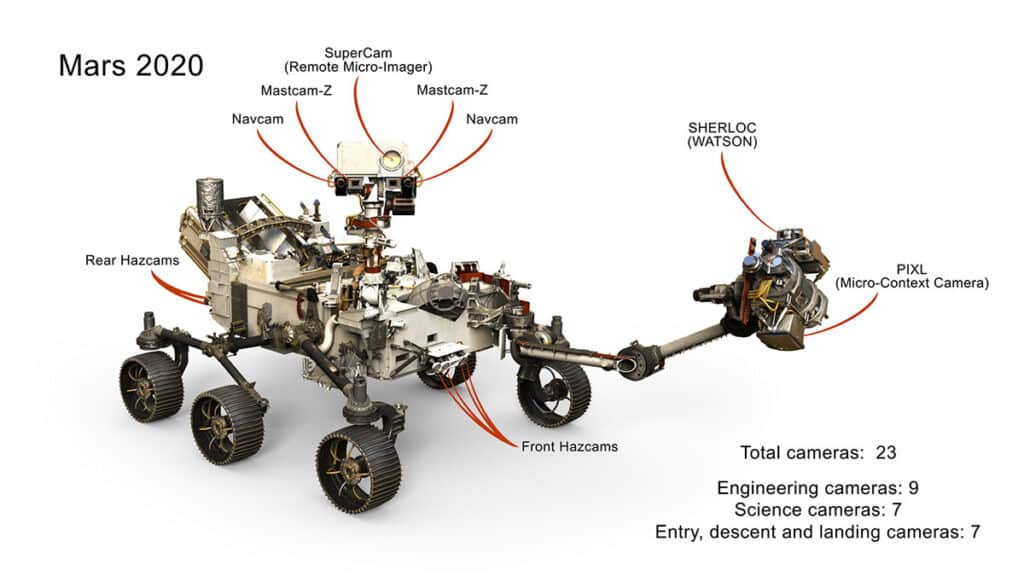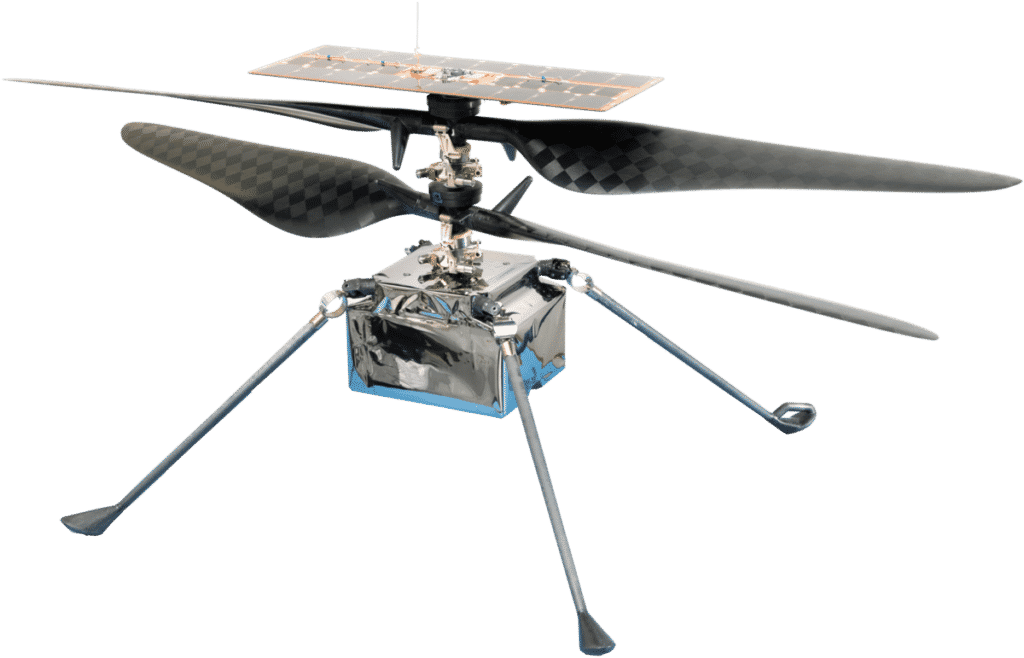Since the latest NASA Mars rover will perform its third mission to the Red Planet this month, you can bet on many parts of the rover itself and 3D print the vehicle it carries. In fact, there are so many that there is a full-scale replica of the rover on the launch site. The copy can also be downloaded from the NASA website as a 3D printable model.
To learn more about the mission, please visit mars.nasa.gov/mars2020/
The STL files and assembly directions that are ready to be printed, so that your own Mini Perseverance Land Rover can be downloaded here. Hengxin will reach Mars in February 2021, where it will look for signs of ancient life and collect rock and soil samples for a possible return to Earth.
NASA’s next Mars mission-Mars 2020 Perseverance Mission-will land on the Red Planet Jezero Crater on February 18, 2021. Meet the challenge.
The Perseverance mission
Wanderers will look for signs of ancient microbes, characterize the geology and climate of the earth, collect carefully selected and recorded samples of rocks and sediments for a possible return to earth, and pave the way for humans to explore the way beyond the moon. Perseverance will also conduct a separate technical experiment on the surface of Mars, a helicopter called Ingenuity, which is the first aircraft to fly on another planet in a controlled manner.
Perseverance was established in the NASA Jet Propulsion Laboratory in Southern California, equipped with scientific instruments, advanced landing computing capabilities, and other new systems. With a chassis measuring about 10 feet (3 meters) long, it is also the largest and heaviest robotic Mars rover ever built by NASA.
Sending the spacecraft to the launch pad this summer will require more effort. Concept research and early technical work began ten years ago, a few years before the project was officially announced in December 2012. Landing on another planet, looking for signs of ancient life, collecting samples, and proving new technologies will also be very difficult.
These challenges are why NASA chose the name “Perseverance” among the 28,000 papers submitted in the “Named Wanderer” competition. In the months leading up to the official release, creative problem solving and teamwork are required during the coronavirus pandemic. As Alex Mather of Braddeck Lake Middle School in Burke, Virginia wrote in his award-winning paper: “We are an explorer, and on the road to Mars we will We have encountered many setbacks. However, we can persist. We, not a nation, but a human being, will not give up.”
Perseverance is built on the lessons of other Mars probes. NASA’s first rover on Mars is very modest: Soujourner (the size of a microwave oven) proved in 1997 that robots can travel on the Red Planet. NASA’s next Mars rover, Spirit and Opportunity, are the size of golf carts. After landing in 2004, they found evidence that the planet was once running water and then turned into a frozen desert. The car-sized “Curiosity” Wanderer landed in 2012. Curiosity discovered that its landing site, Gale Crater, contained a lake billion of years ago, and its environment may support the life of microorganisms.
Perseverance aims to take the next step, with the main goal of solving key problems in astrobiology: Are there signs of past microbial life or biological features on Mars? This demanding scientific goal requires a new set of cutting-edge instruments to solve this problem from multiple angles. The instrument that uses Raman and luminescence technology to scan the habitable environment to detect organic matter (SHERLOC) and the X-ray petrochemical planetary instrument (PIXL) to measure the composition of rocks and soil will enable the permanent heart map to map organic matter, chemical composition and texture The details are higher than the Martian rover ever.
This instruments-two of the seven instruments in total-will play a particularly important role in persevering in finding potential signs of life. The rover will land in a place where signs of past microbial life are most likely to be found. The Jezero Crater on Mars is a 28-mile (45 km) crater located on the western edge of Isidis Planitia, a huge impact basin north of the Martian equator. The crater was a possible oasis in the distant past. Between 3 billion and 4 billion years ago, a river there flowed into the waters the size of Lake Tahoe, depositing sediments full of carbonate minerals and clay. The Perseverance Science Team believes that this ancient delta region may have collected and preserved organic molecules and other potential signs of microbial life.
Perseverance will also collect important data on the geology and climate of Mars. Context is everything. The Mars Orbiter has been collecting images and data from Jezero Crater about 200 miles (322 kilometers) above, but to find signs of ancient creatures on the surface requires more careful inspection. It needs a roamer like perseverance. Understanding the past climate conditions of Mars and reading the geological history buried in its rocks will enable scientists to better understand what the planet was like in the distant past. Studying the geology and climate of the “Red Planet” can also help us understand why the Earth and Mars, which are composed of the same original material, are ultimately so different.
Perseverance is the first step to and from Mars. The verification of ancient life on Mars carries a huge burden of proof. Perseverance is the first rover to bring a sample caching system to Mars, and it will pack promising samples for future missions to return to Earth. Perseverance’s drilling tools do not crush the rock-like Curiosity’s drilling tools, but cut the complete core into a piece of chalk the size, and then put it in the sample tube until the rover reaches the appropriate droop position. NASA and the European Space Agency are planning to carry out a Mars sample return campaign, because, on Earth, we can use instruments that are too large and complex to investigate samples that cannot be sent to Mars.
The instruments and technology carried by Perseverance will pave the way for mankind to fly to the moon and Mars in the future. The Mars Rover’s “Terrain Relative Navigation” system is a forward-looking technology in the Mars 2020 Persistence Mission, which will benefit human exploration. Landing system navigation is part of the landing system, which is the main reason why Perseverance can explore interesting places like Jezero Crater. This will enable the rover to quickly and autonomously understand its position on the surface of Mars and change its trajectory during the descent. This technology will be able to provide valuable assistance for the missions of robots and crews on the moon, and is necessary for future robots and crews to explore Mars.
Engineers also provided Perseverence with more autonomous driving smart devices than other rovers, so that it can cover more ground in a day’s operations without having to wait for instructions from engineers on the earth. Calculated according to the duration of the task, this rapid pace can be translated into more scientific knowledge. This rapid traversal capability (provided by upgraded sensors, computers and algorithms) will make the exploration of the moon, Mars and other celestial bodies of other spacecraft more efficient. Perseverance also conducted a technical demonstration-a proof-of-concept experiment-called MOXIE (Mars Oxygen Field Resource Utilization Experiment). The instrument will produce oxygen in the carbon dioxide atmosphere of Mars, indicating that future explorers may produce oxygen for rocket propellant and breathing. The Mars Environmental Dynamics Analyzer (MEDA) instrument suite will also be the key to future human exploration, which will provide information about the current weather and climate and the nature of surface dust. The Mars Science Laboratory Entry, Descent and Landing Instrument 2 (MEDLI2) package is the next-generation version of the Mars Science Laboratory’s missions. It provides the Curiosity Mars rover, which will also help human exploration and provide data on entry and descent. Atmospheric flight.
You will go with the flow. The “Mars 2020 Perseverance” mission carries more cameras than any interplanetary mission in history. Perseverance rover itself has 19 cameras, which can provide stunning detailed images. The other parts of the space shuttle involve entry, descent and landing, with four other cameras, which may allow engineers to observe the landing process in high definition after the rover safely lands on Mars. As with previous missions to Mars, the “Mars 2020 Perseverance” mission is planned to provide original and processed images on the site’s website. In the spirit of persisting in coexistence with the public, Perseverance Wanderer put a Morse code on the anode plate with the words “Explore as one” written on it, and named about 10 with three silicon chips.
Flying a drone on Mars
Since the Wright brothers are the first to achieve powered and controlled flight in our world through an aircraft, the Ingenuity team of JPL hopes that its helicopter will become the first aircraft in another world. Regarding the first helicopter flying to another planet, you should know the following.
Originality is an experimental flight test. Originality is the so-called technical demonstration-a project that attempts to test new features for the first time within a limited scope. Previous breakthrough technology demonstrations include the Mars Pathfinder Rover Sojourner and the MarCO CubeSat flying by Mars. Ingenuity has four specially manufactured carbon fiber blades arranged into two 4-foot-long (1.2-meter-long) counter-rotating rotors that spin at approximately 2,400 rpm-about eight times that of a standard helicopter on earth-plus innovation Of solar cells, batteries, avionics, sensors, telecommunications and other designs and algorithms. But many of its other components are commercial off-the-shelf parts in the smartphone field, including two cameras, an inertial measurement unit (measure movement), altimeter (measure height), inclinometer (measure tilt angle), and computer processor. The helicopter does not carry scientific instruments and is an experiment conducted separately from the “Mars 2020 Perseverance” program.
The originality will be the first aircraft to attempt a controlled flight on another planet. The temperature of Mars exceeds the shocking temperature, and the night in Jezero Crater (Jezero Crater) is cold to 130 degrees Fahrenheit (90 degrees Celsius). These temperatures will push up the original design limits of off-the-shelf parts used by Ingenuity. Earth tests at predicted temperatures indicate that they should work as designed, but the team is looking forward to real tests on Mars. When arriving at the “Red Planet”, one of Ingenuity’s primary goals is to spend the first cold night on Mars. The atmosphere of Mars is sparse-only 1% of the density of the Earth’s atmosphere. Since the atmospheric density of Mars is much lower, Ingenuity is designed to be lightweight,
Mars provides a little help for helicopters: the gravity of Mars is only one-third of that of the earth. This means that more quality can be improved at a given rotation speed. Communication also faces challenges. Delay is an inherent part of communication with spacecraft across planetary distances, which means that JPL’s helicopter flight controller will not be able to control the helicopter using the joystick. Therefore, originality must fly autonomously. The flight command will be sent to Ingenuity in advance, and the flight engineering data after the flight will be returned to the earth. The originality will communicate through the rover, which will then communicate with the orbiter communicating with the earth. It took humans many trial and error to figure out how to fly an airplane or helicopter on the earth. After five years of careful design, the engineers of the Ingenuity team proved that it is possible to create something that is light in weight and can generate enough lift in the thin atmosphere of Mars to take off from the ground. 3. Originality has proved the feat of engineering.
Using a special space simulation module of JPL, they first showed that the helicopter can take off in the thin atmosphere of Mars in 2014, and then it can fly in a controlled manner in 2016. They proved that it is possible to build a helicopter to survive in the Martian environment and operate according to the design in January 2018 by flying a helicopter test model with all the functions required by the helicopter in the cabin. In January 2019, the team completed a test flight of an actual helicopter, which will fly to the red planet with perseverance to demonstrate its capabilities under conditions similar to Mars. Taking off and hovering from the surface of Mars will confirm previous tests and provide practical insights for operating helicopters on Mars.
Perseverance Wanderer
Vaneeza Rupani of Northport, Alabama originally named Ingenuity after the 2020 Mars probe, but considering how much creative thinking the team used to accomplish their mission, NASA officials believe this is an appropriate name for the helicopter. Rupani wrote: “The intellect and talent of people who work hard to overcome the challenges of interplanetary travel allow us all to experience the miracles of space exploration.” “Ingenuity enables people to accomplish amazing things. “Rubani’s paper unknowingly also paid tribute to the rover and the helicopter, who worked together to accomplish the feat of space exploration: she wrote that to put people on the moon and send the rover to Mars, “not just The product of pure determination; it also has great significance. They are a combination of human perseverance and creativity.”
In view of all the first tasks that Ingenuity is trying to complete, the team needs to pass a series of milestones before the helicopter can take off and land in the spring of 2021. If Ingenuity’s first flight is successful, the helicopter team will try to fly upwards. Four other test flights were conducted within the 30-day (31-day) window. It needs to be launched from Cape Canaveral, sail to Mars, and land on the red planet in order to be safely deployed to the ground from the belly of the Persevering Rover. The drone will automatically keep warm on the extremely cold Martian night and automatically charge its solar panels.
The originality aims to demonstrate the technology needed to fly in the Martian atmosphere. If successful, these technologies will enable other advanced robotic aircraft that may be included in future Martian robots and human missions. Among the helicopters that may be used on Mars in the future: Provide unique perspectives that our current orbiter flying at high altitude or Mars rover and lander on the ground cannot provide; HD images and reconnaissance for robots or humans; and enter Terrain difficult to reach by rovers. Helicopters of the future can even help transport light and important payloads from one location to another.





